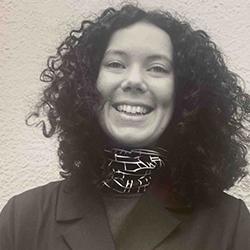Supervisor: Prof Alyce Mahon
Research overview:
The project examines the use of tempera by three surrealist artists in the 1940s–60s: Leonora Carrington (1917–2011), Sylvia Fein (*1919), and Gerrie Gutmann (1921–1969). Their unusual choice of medium has been largely ignored, treated as inconsequential art historical fun fact or buried in mislabelling of their works as painted in the more common medium oil. The project repositions their use of tempera as central to their respective artistic practices and works’ polyvalent meanings. It proposes to consider how the material iconography of their egg and milk temperas add levels of meaning to their works, complicating what is represented pictorially and commenting on the nature of paint and its manipulation into images. Challenging traditional artistic notions of figuration and abstraction, the artists revaluated matter and materials in their practices. Those had been traditionally subjugated to idea and form and coded feminine throughout the philosophical tradition. The gendered nature of this discourse as well as its anthropocentric outlook draw attention to the artists’ practices as both feminist and ecocentric. Through the lens of paint medium and process, the project thus aims to situate their works from the 1940s–60s among changing notions of gender, materiality, painting, narrative and representation.
Biography:
Helen is a PhD candidate at Trinity College. For her doctoral project, she combines expertise from her MA in Technical Art History, Stockholm University, and her MPhil in History of Art, University of Cambridge, for which she worked on Leonora Carrington and her paintings and processes as expressions of alchemy. Her research interests include epistemologies of making, material iconographies, and philosophies of materiality. Her research has been supported by Kettle’s Yard, the Paul Mellon Centre, and the Kurt Hahn Trust.

